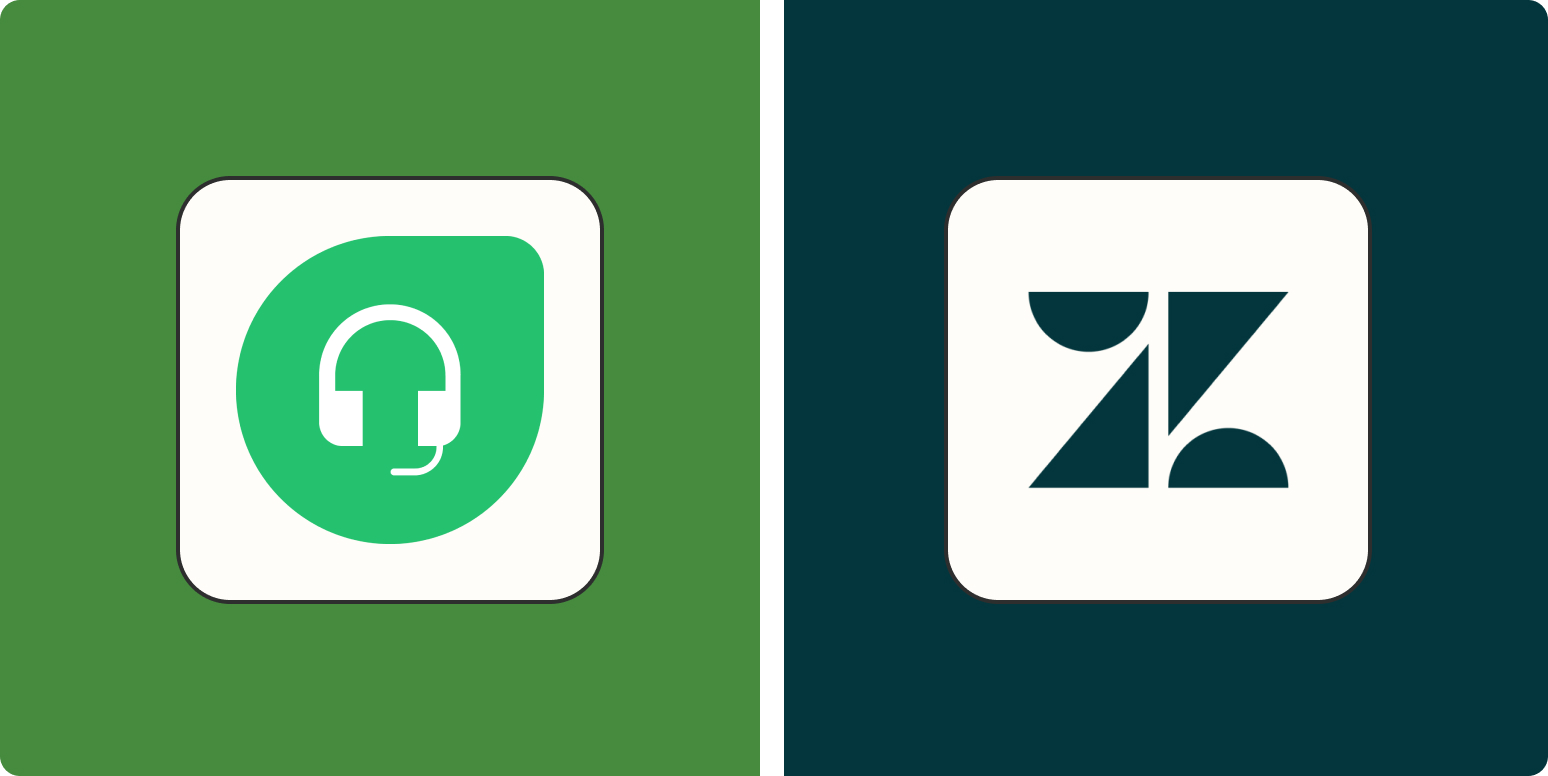In the era of “callout culture,” consumers aren’t shy about posting negative reviews of businesses with poor customer service. The struggle comes in maintaining multi-channel customer support—and that’s where customer service software comes in.
I spent time testing two of the most popular platforms on the market: Zendesk and Freshdesk. Here’s how they stack up.
Zendesk vs. Freshdesk at a glance
Once upon a time, the differences between Zendesk and Freshdesk were clear. Zendesk was the powerhouse of efficiency and robust features, while Freshdesk was the simpler, more affordable alternative. But Freshdesk has done a lot of catching up since it first launched in 2010. Here’s a handy table that highlights some of the major points of comparison between Freshdesk and Zendesk, but keep reading for a deeper dive.
|
Freshdesk |
Zendesk |
|
|---|---|---|
|
Setup and onboarding |
|
|
|
Pricing |
|
|
|
Ticket management |
|
|
|
Chat support |
|
|
|
Ticket dashboard |
|
|
Before diving in, let me clarify one other thing: for the purposes of this comparison, “Zendesk” refers to Zendesk for service only; “Freshdesk” refers to Freshdesk Omnichannel Suite. It’s a little confusing because Zendesk for service is the technical name of the product, but people generally refer to it simply as “Zendesk.” Plus, the name of the company is also Zendesk. Conversely, Freshdesk is a product made by Freshworks the company.
While Zendesk and Freshworks both offer other products, this article only focuses on their customer service software.
What’s not different between Zendesk and Freshdesk
If you’re looking for a tie-breaker between Freshdesk and Zendesk, skip past this section.
-
Knowledge base and self-service: Both offer customizable internal and external knowledge bases, so customers and employees can access troubleshooting guides, FAQs, or any other essential information they might find useful.
-
Reports and data analysis: Zendesk and Freshdesk both come with pre-built dashboards and report templates, or you can create your own.
-
App integrations: Both platforms have 1,000+ apps spanning a broad range of categories, and both apps integrate with Zapier.
Zendesk’s onboarding is more user-friendly
Freshdesk and Zendesk both offer training resources to help you get started, but Zendesk’s onboarding is just easier.
To start, Freshdesk doesn’t have a clear onboarding program. I had to reach out to their support team to direct me to their database of training resources because it wasn’t obvious how to find it. While the database provides step-by-step guides and a separate video library to help you get set up, I was a little overwhelmed by the sheer volume of documentation and choose-your-own-adventure style of learning.
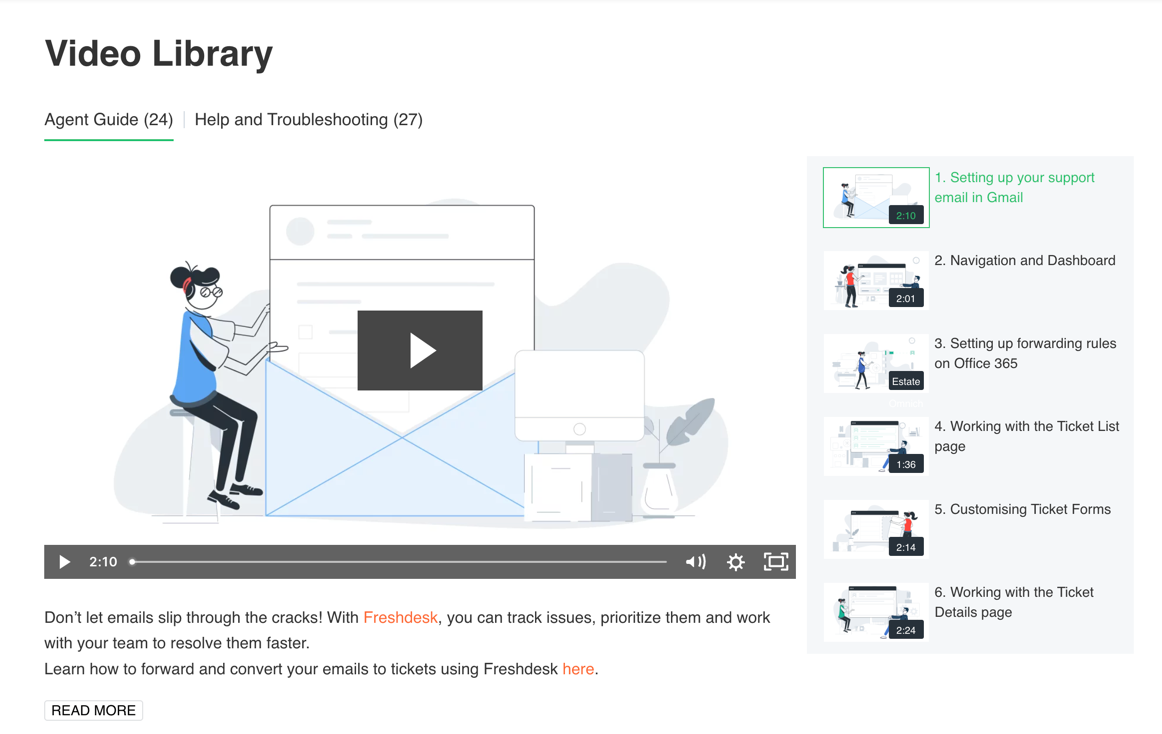
Zendesk, on the other hand, provides a structured onboarding experience that’s easy to navigate, with guided walkthroughs almost every step of the way.
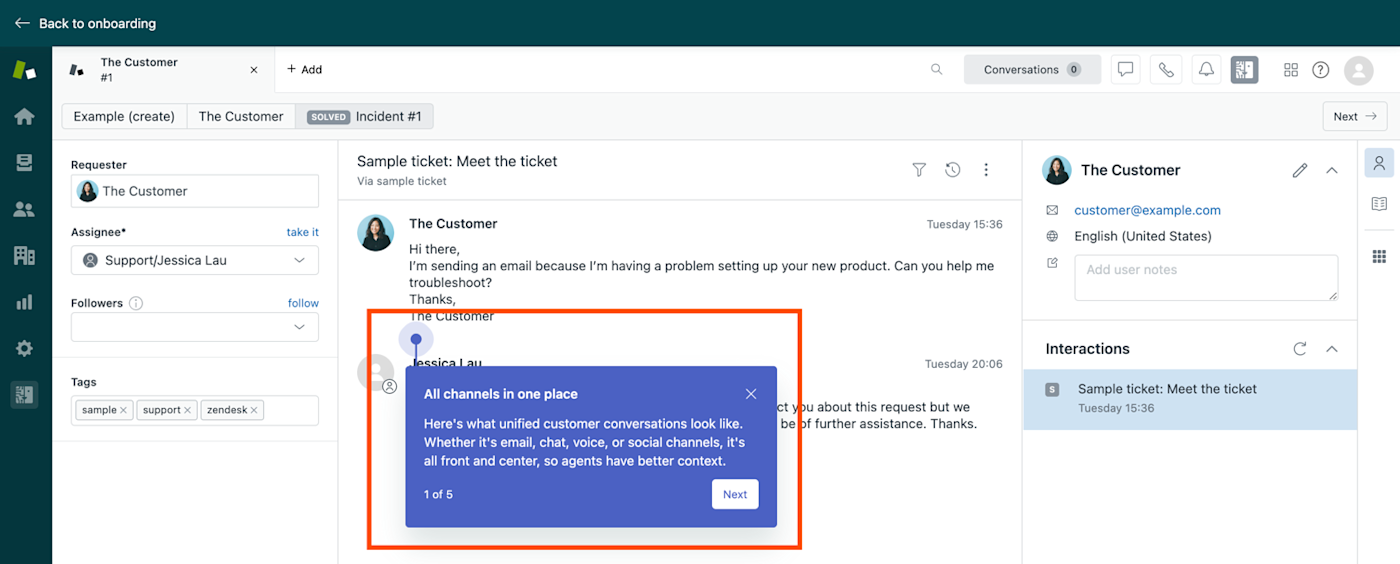
Zendesk claims you can get an overview of its features, plus set up a few key tasks in less than an hour. The first half is true, but the latter claim is a little misleading. Sure, you can connect Zendesk to your website and social channels in an hour, which is important for your customers to begin interacting with you. But you’ll need more time to set up the back end for your customer support team to get up and running smoothly.
Fortunately, both Freshdesk and Zendesk are fairly intuitive to use—but onboarding support is still worth thinking about, especially if you’re a larger company that can’t afford to spend time hand-holding new employees.
Freshdesk is cheaper and offers a free plan (but it’s very limited)
Freshdesk was founded partly in response to rising Zendesk prices, so it’s no surprise that Freshdesk continues to be the more cost-effective option.
Comparing the top-of-the-line plans with similar features, Freshdesk is cheaper: It costs $99/agent/month vs. Zendesk’s $150/agent/month (both billed annually).
Neither company offers a free plan for their omnichannel products, but Freshdesk does allow you to use the individual products that make up its Omnichannel Suite (Support Desk and Contact Center) for free. But there are a few caveats:
-
Support Desk is free up to 10 agents only;
-
Reporting and analytics are limited to ticket volume trends;
-
Customization is not an option; and
-
Support Desk and Contact Center cannot be accessed in one platform, so you have to toggle back and forth.
If you don’t need all the bells and whistles, and your budget is limited, Freshdesk can save you big money in the long run. If you want a customizable and comprehensive support platform, Zendesk is worth the bigger price tag. If you’re exploring Freshdesk alternatives, there are a number of options that might suit your needs.
Freshdesk allows you to respond to tickets faster
If you have a high ratio of customer conversations to customer support agents, and you want to resolve tickets faster, Freshdesk takes the lead.
Freshdesk makes it easy to create and organize canned responses (i.e., templated responses you create yourself). With quick actions in ticket replies, you can use a keyboard shortcut to quickly find and insert canned responses and solution articles (i.e., Freshdesk’s guess for the best knowledge base article for the question at hand).
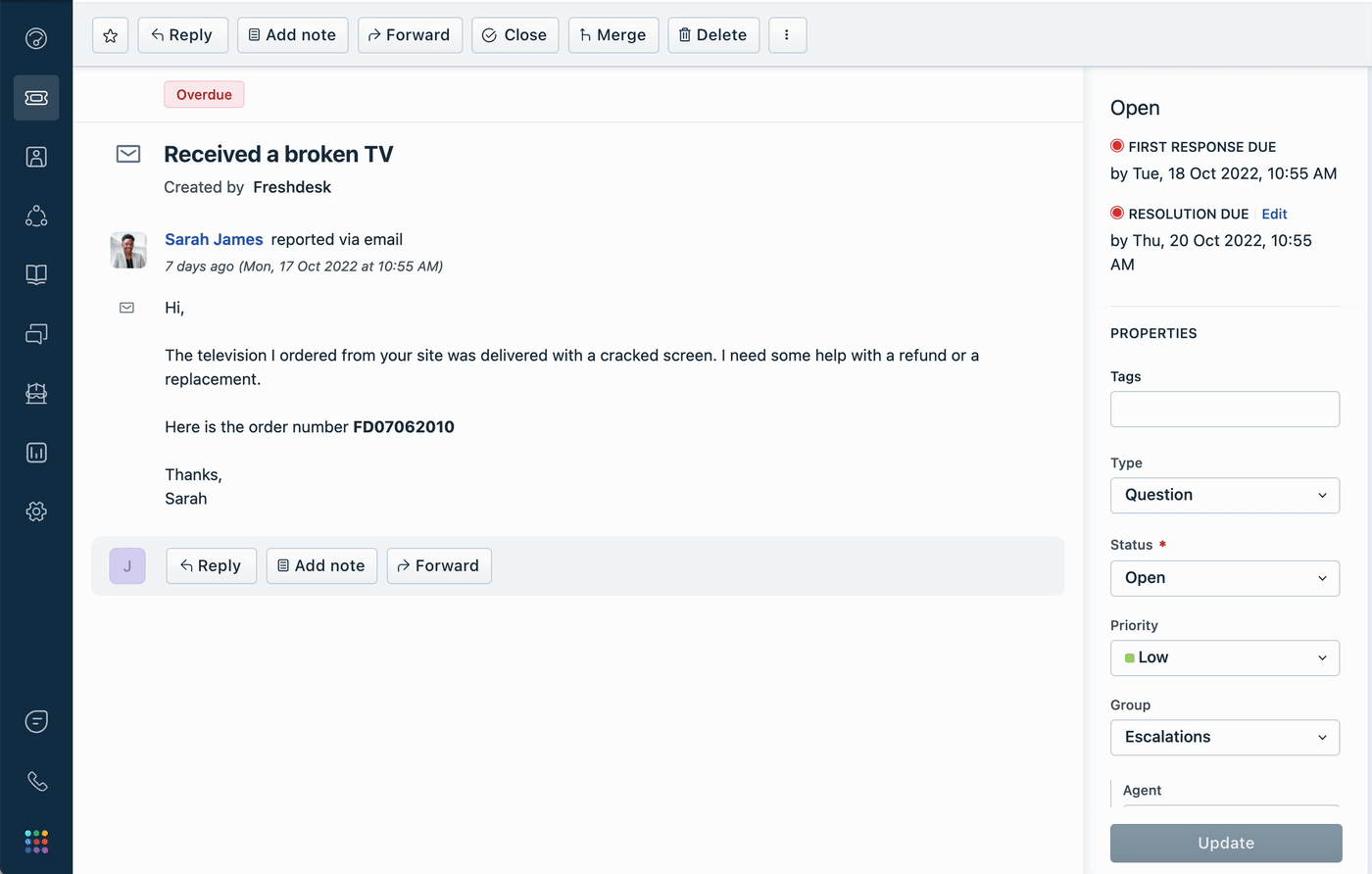
Zendesk’s version of canned responses—called “Macros”—can’t be inserted with a keyboard shortcut. Plus, macros are simply listed in alphabetical order with no other organization or sorting, making it trickier and more time-consuming to find the appropriate response. For what it’s worth, Zendesk does automatically populate your most used macros to the top of the list.
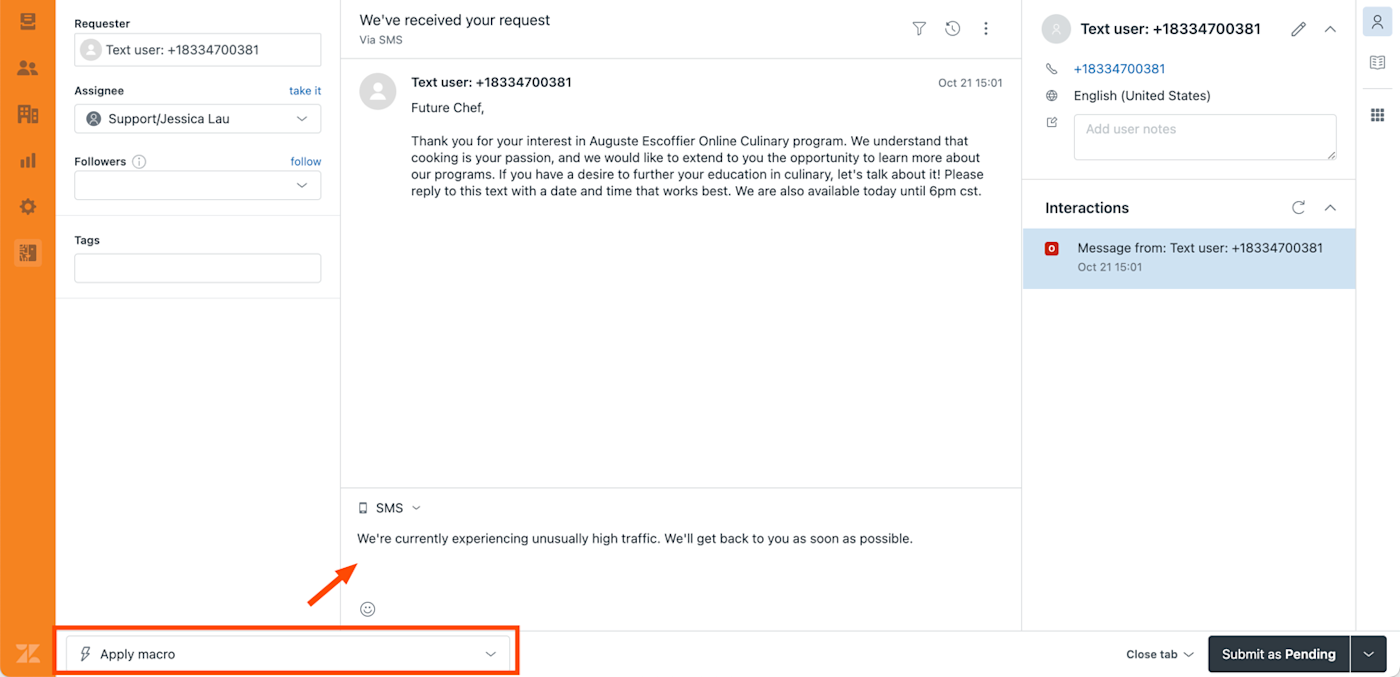
If you don’t have a lot of templated responses to dig through, or you commonly send the same three to five messages, both apps will get the job done.
Zendesk makes it seamless to collaborate on tickets
When it comes to seamless team collaboration, Zendesk comes out on top.
Zendesk has a really neat feature called “Side conversations,” which allows you to discuss a ticket with other team members via email, Slack, or another child ticket (i.e., a ticket created from a side conversation) right from Zendesk. Plus, all side conversations appear directly within the ticket as a comment but remain hidden from the customer.
Note: You cannot use the Zendesk Support mobile app to create, view, or reply to side conversations.
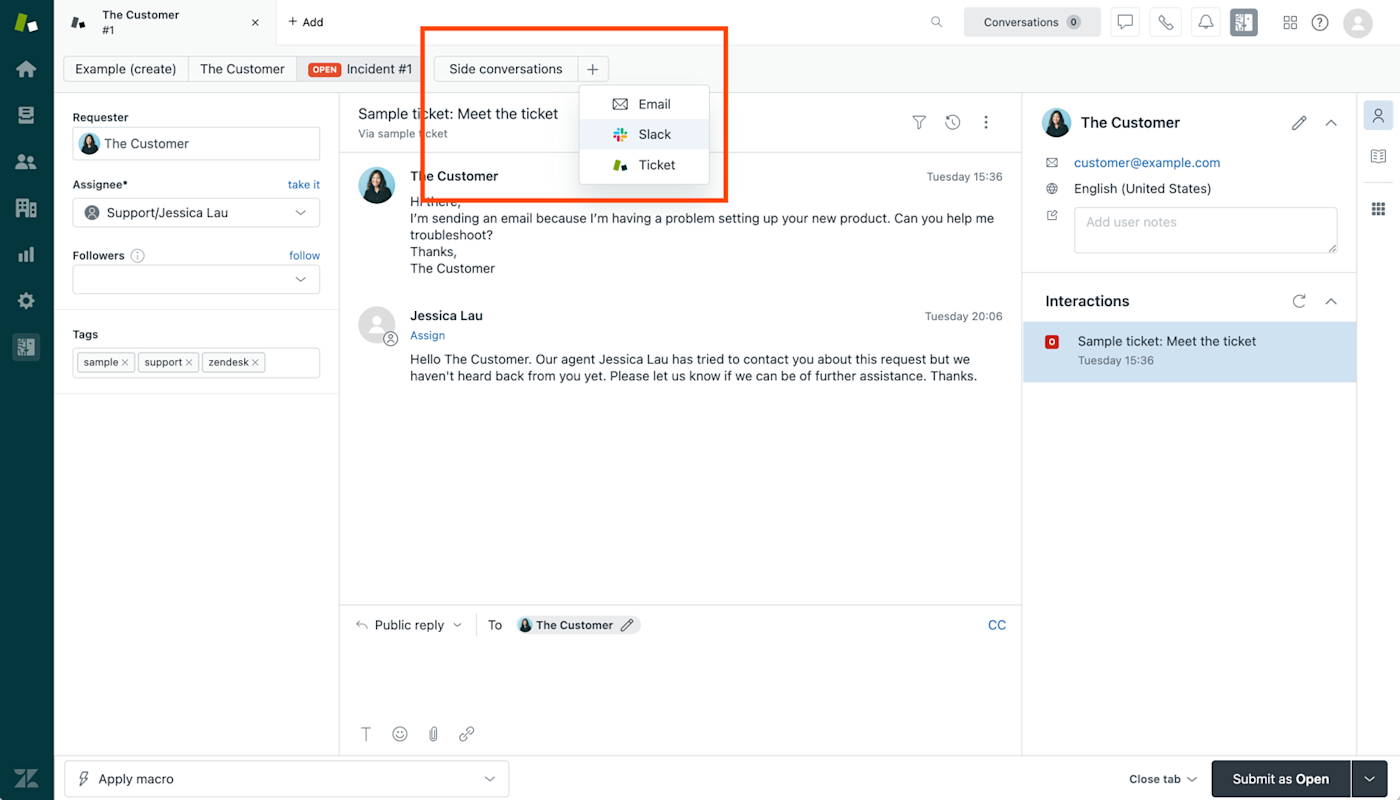
Freshdesk offers something similar with Freshconnect—an app from Freshworks, which integrates with Freshdesk and allows teams to collaborate on tickets directly in Freshdesk. But conversations only happen in the Freshconnect app. You can also integrate Freshconnect with popular communication apps such as Slack or Microsoft Teams, but this will only notify you that there’s a new message or reply waiting in Freshconnect. For example, if you receive a notification in Slack that there’s a new message for you in Freshconnect, you’ll have to switch to Freshconnect in Freshdesk to view the message and reply.
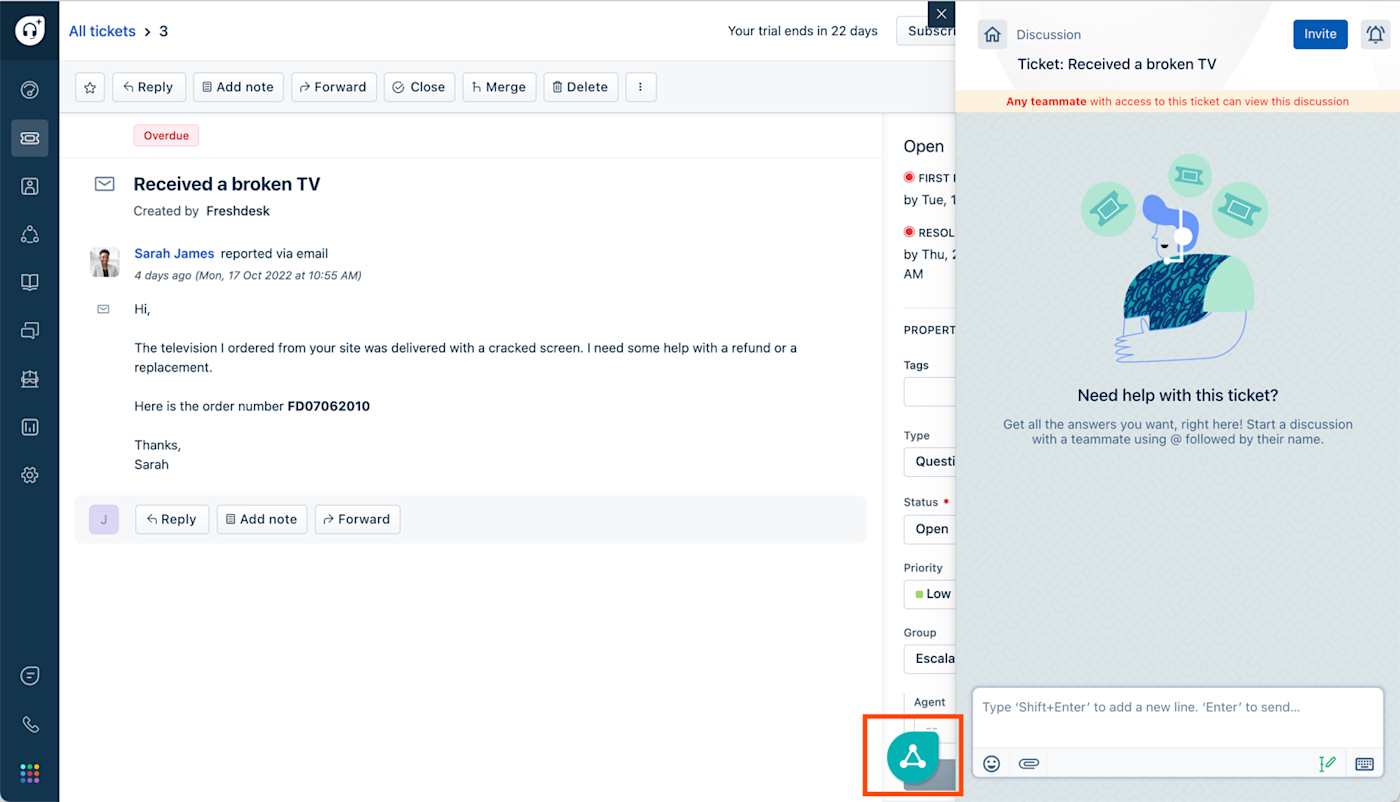
If your customer support team receives a high volume of tickets, it can be easy to lose track of what’s happening at any given time in a ticket—especially if you have to toggle between apps to manage the ticket and pull in help from other teammates. If this is the case for you, Zendesk will be a game changer.
Zendesk allows you to engage with customers across more channels
While Freshdesk and Zendesk both allow you to communicate with clients via popular communication channels (email, Twitter, live chat, and AI-powered chatbots), Zendesk offers even more channels, including text, WhatsApp, and Line. This is one of the many reasons why we named Zendesk one of the best live chat apps for customer support.
And on a picky note: Freshdesk uses Freshchat—another app from Freshworks, which integrates with Freshdesk—to communicate with customers. Meanwhile, chat support is simply baked into Zendesk. While this isn’t necessarily a dealbreaker, keeping track of all the different Freshworks products really made my head spin—especially when searching for articles on how to use each product.
Zendesk offers more diverse filtering for ticket dashboard views
Both Freshdesk and Zendesk offer simple and intuitive methods to filter and save ticket views, but Zendesk provides more filters and customization.
In Freshdesk, the ticket dashboard is simple. You can sort and filter tickets through a dozen or so metrics, based on what’s most important to your task (agent, status, response due by, and so on).
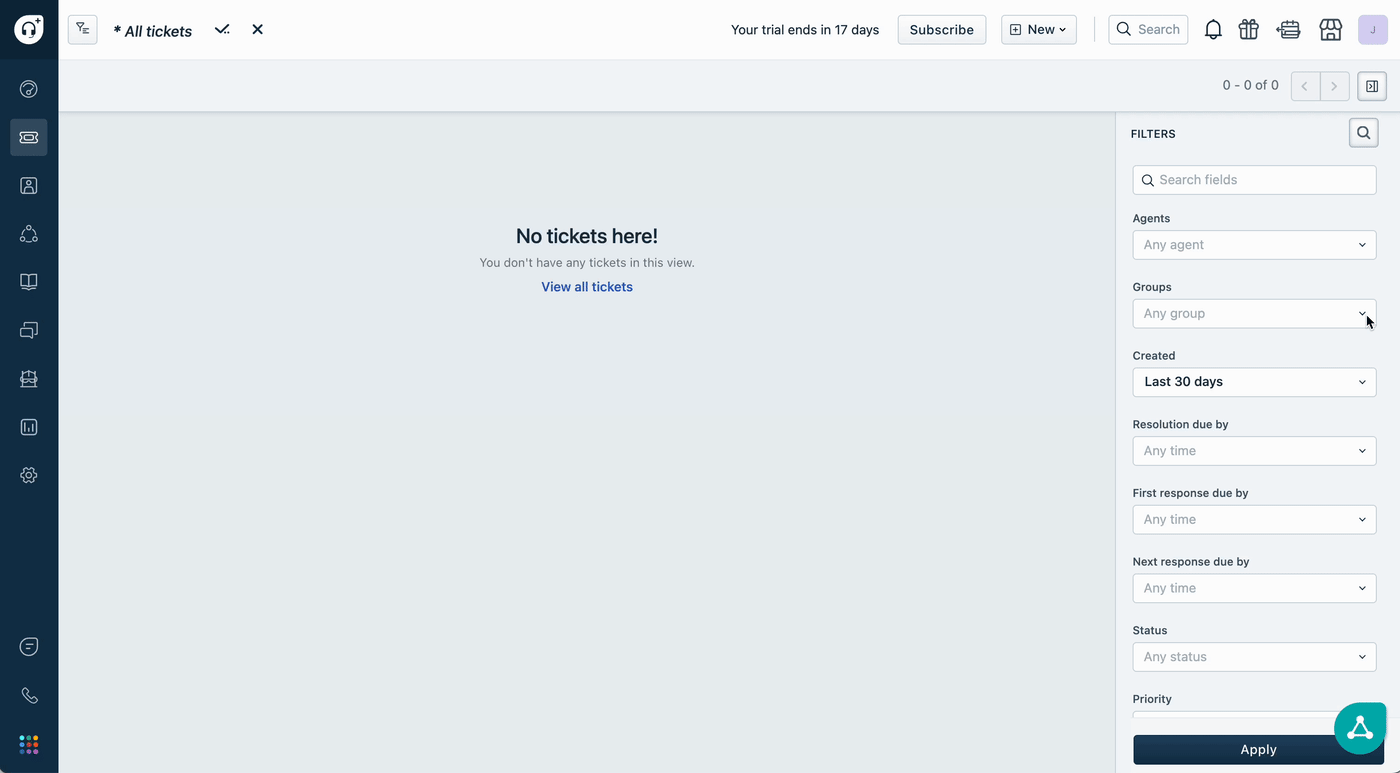
Zendesk, on the other hand, allows you to organize your tickets based on multiple, customizable conditions. Plus, you can reorder how the fields appear in your Zendesk ticket dashboard.
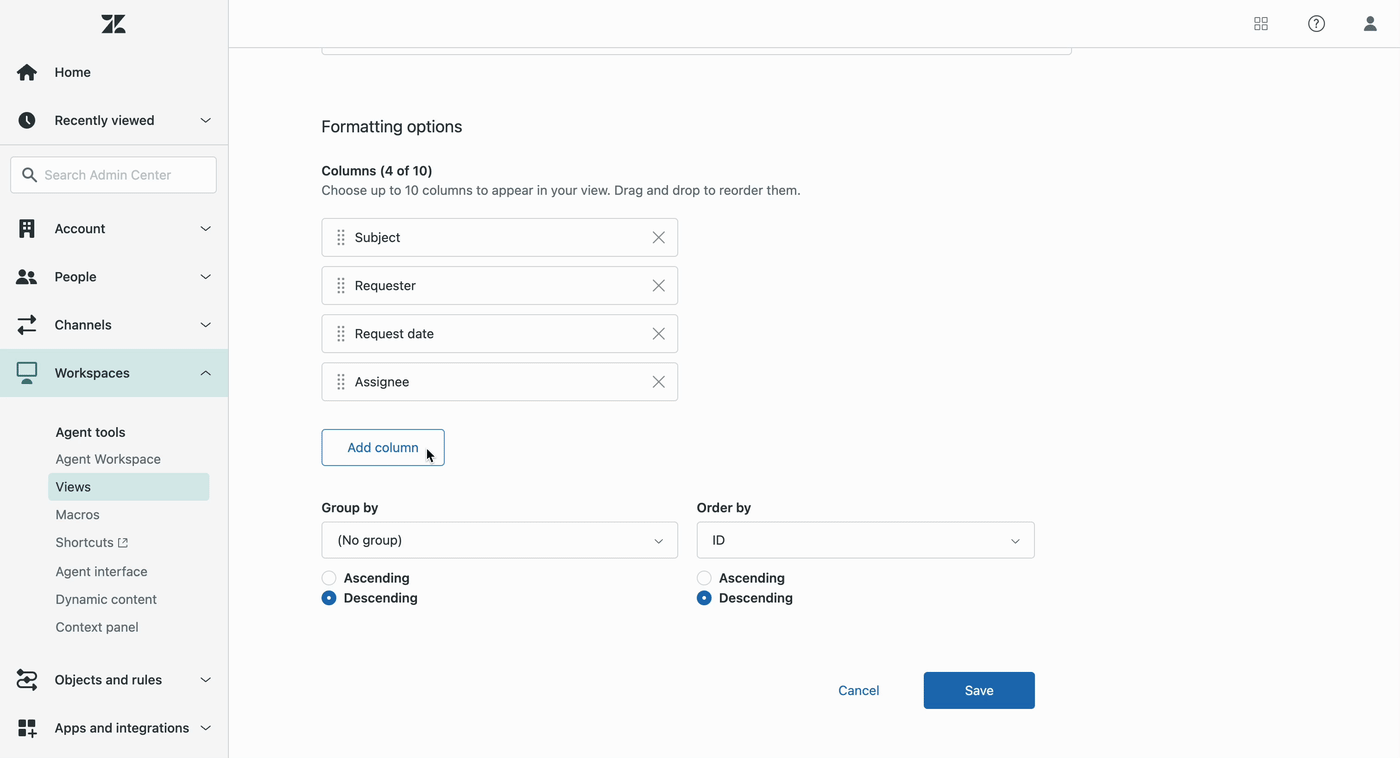
Note: With Freshdesk, you can filter and save views directly from the ticket dashboard. Zendesk, on the other hand, forces you to navigate to the Admin Center to create new ticket views.
Both platforms integrate with Zapier
Whichever customer service software you choose, you want it to play well with the rest of your tech stack. Using Zapier, you can automate your team’s processes by connecting Freshdesk and Zendesk to the other apps you use most. Here are a few resources to get you started:
Zapier is the leader in no-code automation—integrating with 5,000+ apps from partners like Google, Salesforce, and Microsoft. Build secure, automated systems for your business-critical workflows across your organization’s technology stack. Learn more.
Freshdesk vs. Zendesk: Which should you use?
When doing a Freshdesk and Zendesk comparison, there’s no obvious winner. It all comes down to needs and priorities.
For leaner, growing teams on a budget, Freshdesk is simple and affordable. For teams that want the best pricing-to-features ratio (and have the spending room), Zendesk is your best bet.
This article was originally published in December 2018 by Jeremy Moser. The most recent update was in November 2022.
[adsanity_group align=’alignnone’ num_ads=1 num_columns=1 group_ids=’15192′]
Need Any Technology Assistance? Call Pursho @ 0731-6725516

